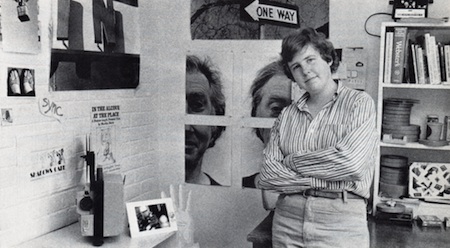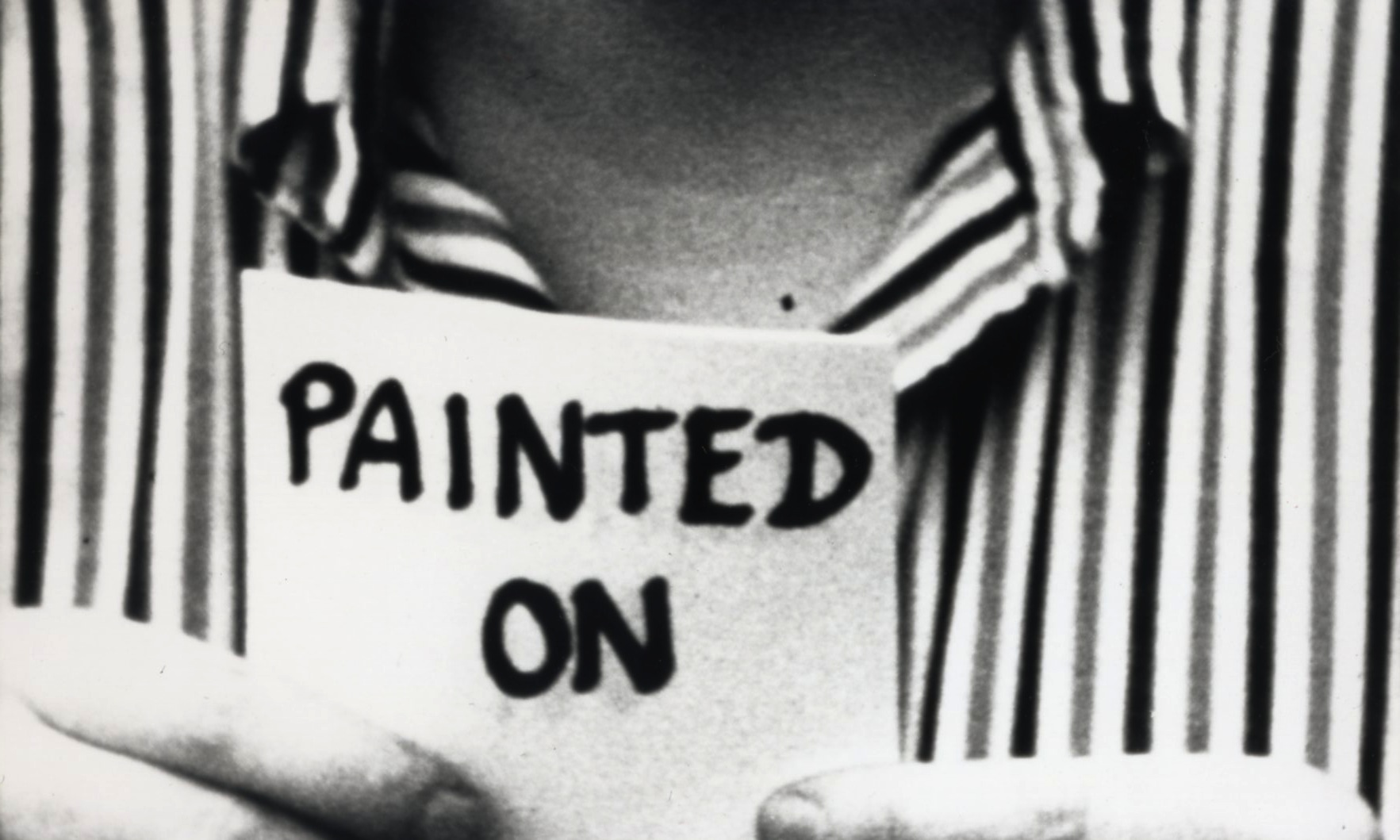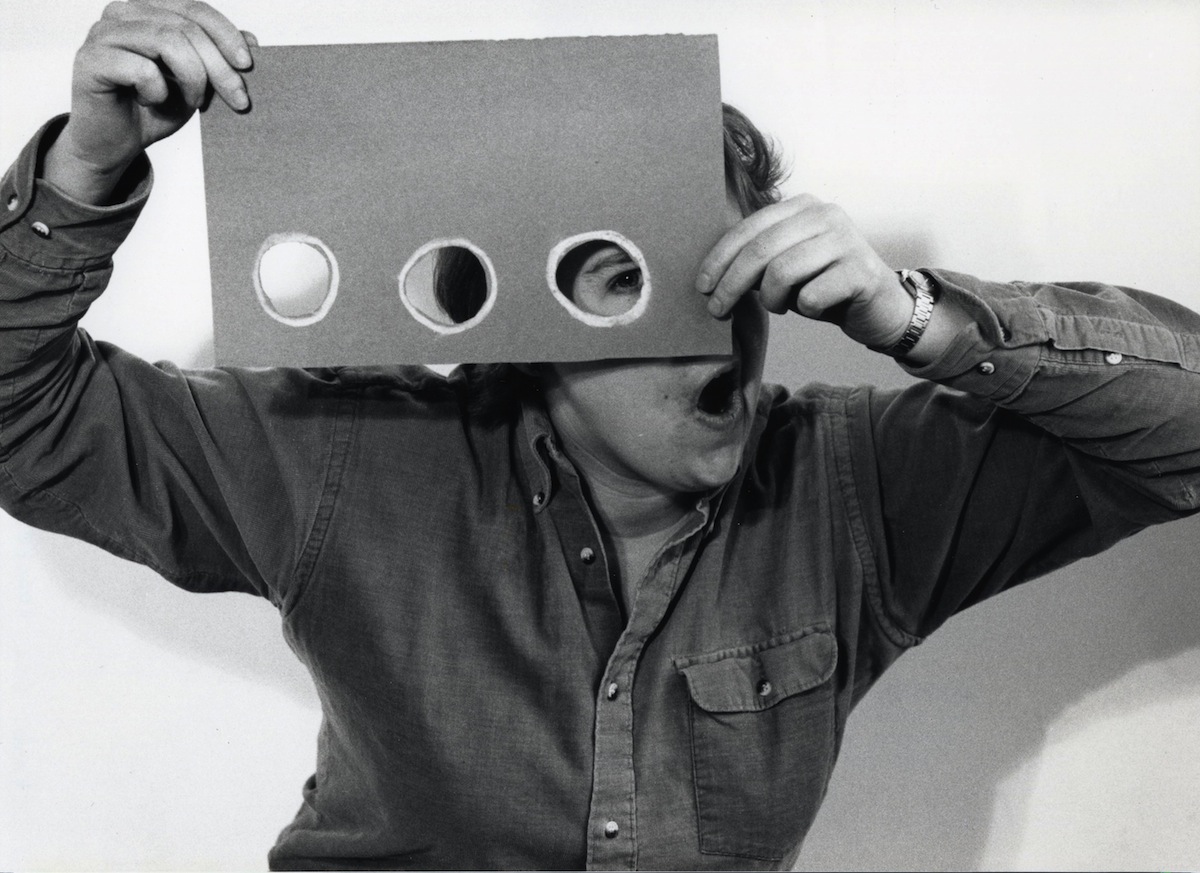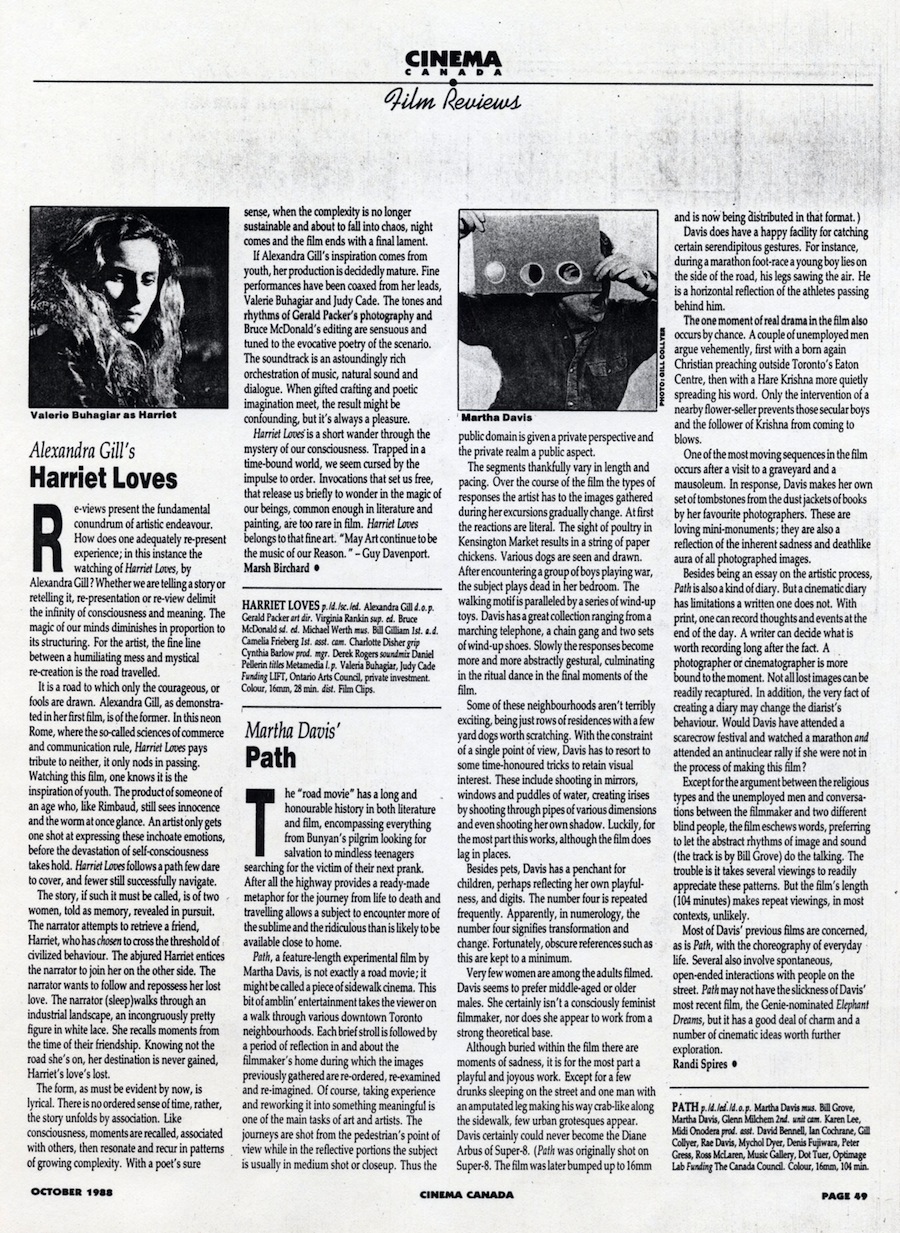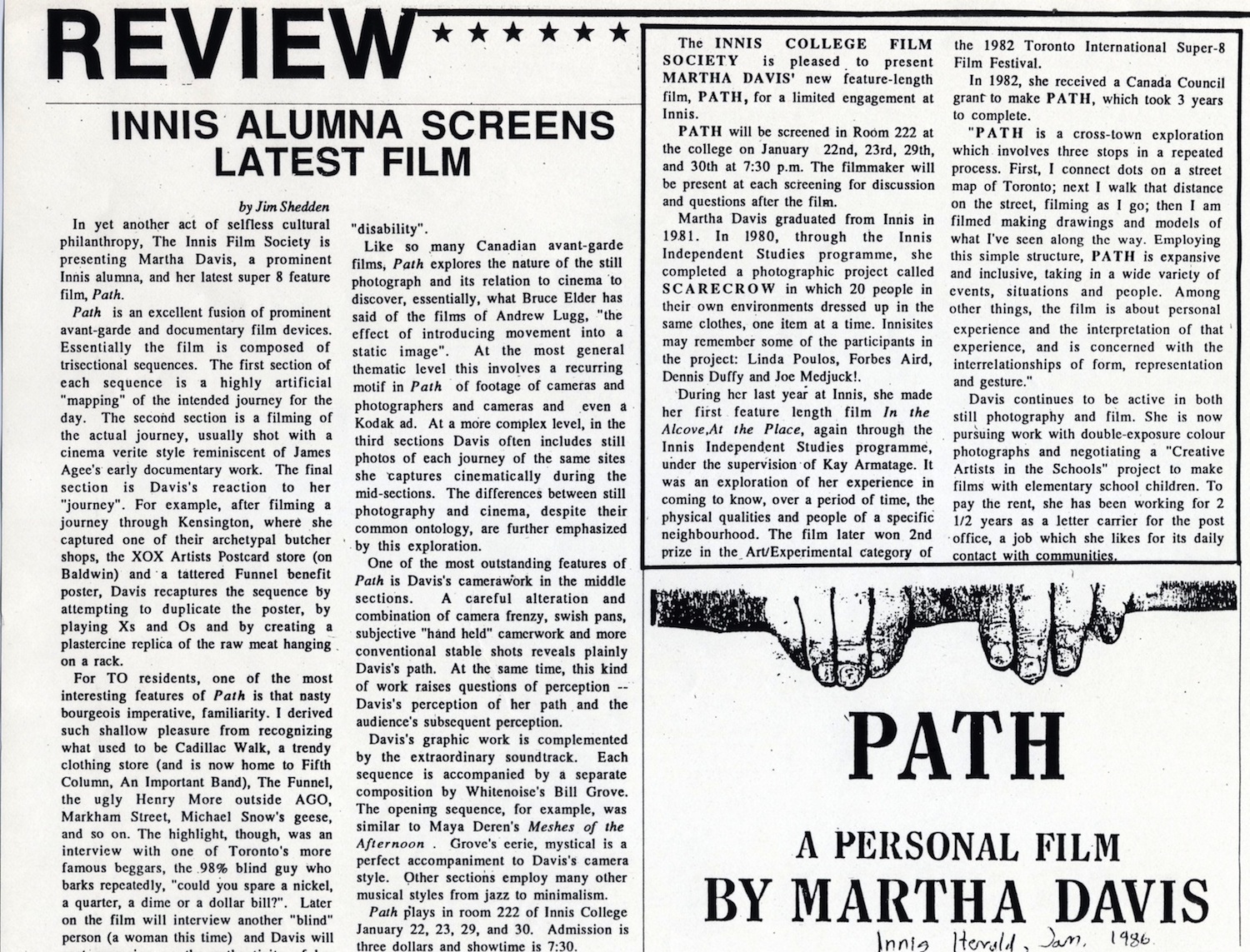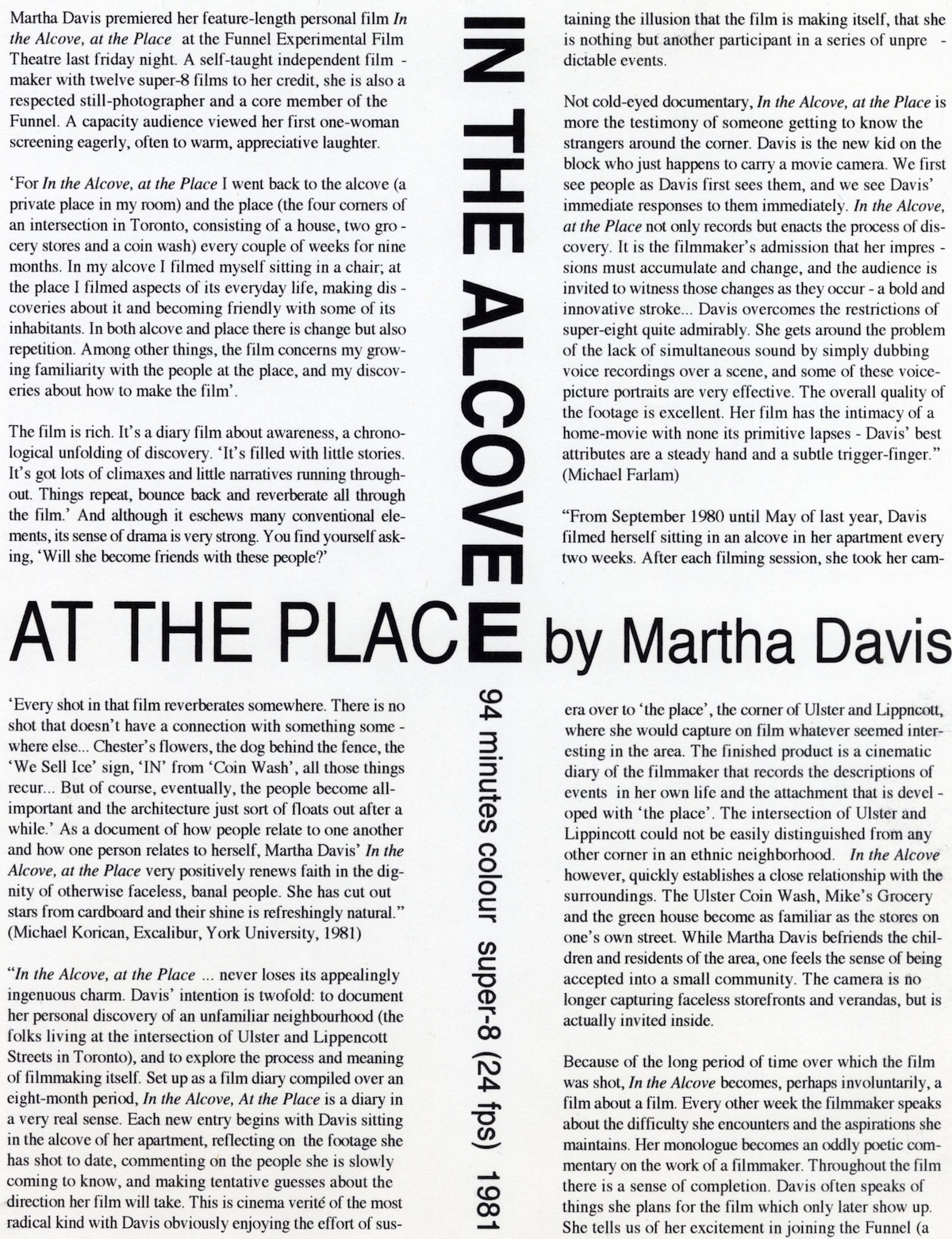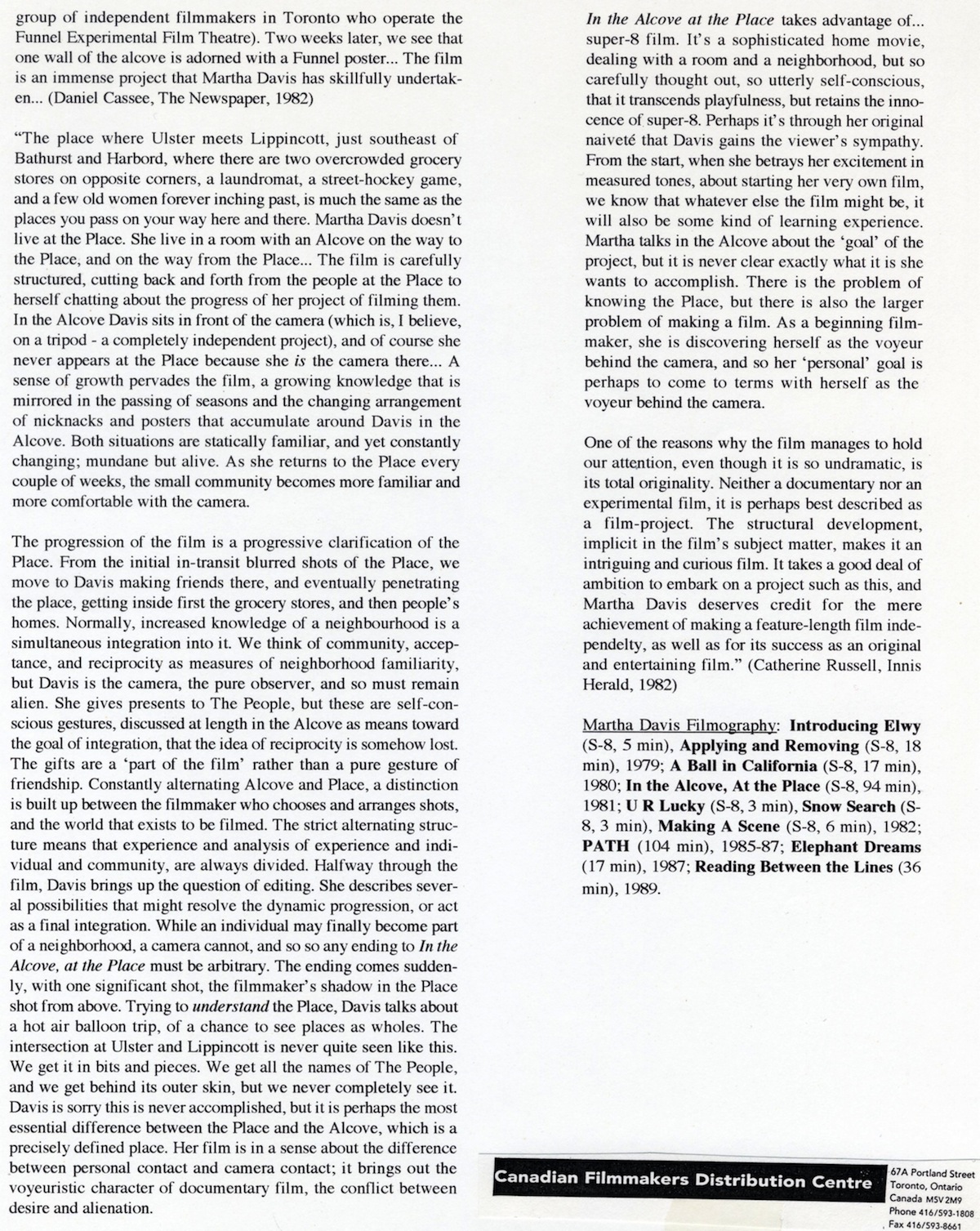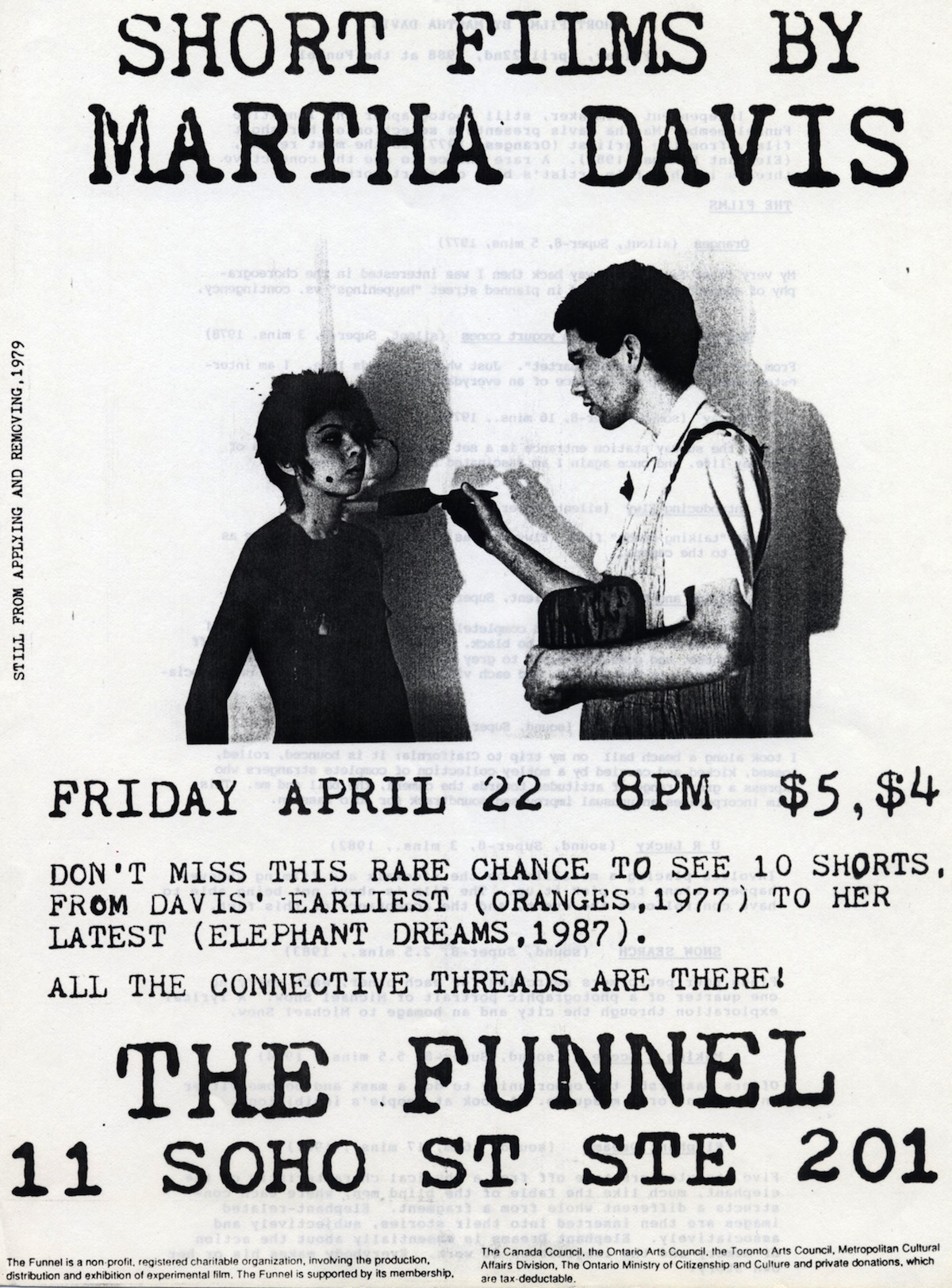Dot and Davis on the path to… by Dot Tuer and Martha Davis
(Originally published in: Funnel Newsletter Vol. 6, Number 4, March/April 1985)
This interview appeared on the flip side of the Funnel’s bi-monthly program guide. On the listings page it reads: Wednesday April 10, 8pm $3.50. In Person Martha Davis. PATH. Martha Davis has been a Funnel member since 1980. This is the premiere of her second feature-length Super-8 production. “Path is a cross town exploration which involves three steps in a repeated process. First, I connect dots on a street map of Toronto; next I walk that distance on the street, filming as I go; then I am filmed making drawings and models of what I’ve seen along the way. Employing this simple structure, Path is expansive and inclusive, taking in a wide variety of events, situations and people. Among other things, the film is about personal experience and the interpretation of that experience, and is concerned with the interrelationships of form, representation and gesture.” (MD)
Dot: Why don’t you begin by explaining the general interests that lay behind the making of your film the PATH.
Davis: For a long time, I’ve been interested in walking and experiencing. My other work deals extensively with street happenings. And in this film I wanted to take a trip through the city, catching the details of the indigenous area I happened to be in.
Dot: So, you’re walking along streets with a camera. Do you pre-select what you will film?
Davis: No. I go where my eye takes me. So it’s very quick and unchosen in that regard.
Dot: But when you’re catching people with a camera, there is no longer the possibility of a completely spontaneous relationship. So how do you perceive this relationship?
Davis: I see myself as a looker and an onlooker-an observer-and I guess as a camera person, a voyeur, a taker, but not in an exploitative sense.
Dot: After you film the street, ‘as a taker,’ you construct models about this experience. Where did the idea of the models occur?
Davis: I guess it seems from my first feature-length film, In the Alcove, In the Place (1981), which was about a juxtaposition of the public and the private. In this film, I’m taking the public experience everyone can see (the street sequences), and re-interpreting these-‘making them over’-in the models on a very, very, personal scale. And that’s why it’s important that the scale of these models start out in miniature-taking a big experience and bringing it closer to the level of an analog.
Dot: But why is that important for you?
Davis: Because it makes the street experience personal. For the PATH is about finding my way. I’m very interested in finding my feet, literally, in the film–understanding what I’m doing while I’m doing it. And the models are about making those connections as I go along.
Dot: Then do you think this film pertains to your memory–the memory of the sequences you film on the street?
Davis: Very much so. I like the idea of the models not only being representational but also abstract, even esoteric. For in a sense, the models are an effort to bring subconscious reflections to the surface.
Dot: It seems to me that every time someone picks up a camera, they are somehow distancing themselves, creating a barrier, a public space, as opposed to a personal space. Are the models, then, to operate on a level that brings the at of filming back to a personal plane–to ask why one goes out and films certain things at certain times?
Davis: I don’t think why is the operative question. It is how–how things are experienced and re-experienced. In this sense, the models reveal more about me than the street.
Dot: There was one sequence in the film which interested me particularly. You are interviewing a blind man on Yonge Street, and you ask, “Do you know that the colour of your jacket is green?” and then you ask “Do you know what the colour green looks like?” The next question pertains to economics. You establish that he gets a disability pension, but begs on Yonge Street to supplement this $400 assistance income. Then you suggest that you also live on $400 a month. It’s not a lot. But you get by. It seems that on several levels you are identifying with this man. Is it something to do with walking through the city like a blind man–looking for the colour green
Davis: That’s a thought–though I have always had rapport with strangers.
Dot: And then in the accompanying model to this sequence you are running through the trees with a cape over our head, repeating, “I don’t know what the colour looks like–not at all–not at all.” This suggests to me that one is always searching for references in public spaces but one cannot always find them. There’s a dislocation. And it seems to have something to do with the camera as sight–as voyeur–so you think you’re capturing the ‘public’ when in fact–
Davis: In fact, I’m capturing snatches of the public, in an effort to make sense of it all.
Dot: When you use these models, you begin with quite literal representation, then move towards more gestural and performance-oriented metaphors. What I’m wondering, do these models also function on a level of fantasy–reconstructing events that not only have happened–but that you would like to happen?
Davis: Yes. For instance, one of the grander models is an analog to a camera chase of a girl running through the horticultural gardens. In the model, I spend two minutes making this huge painted mural–this immense watercolour. I’ve always had this fantasy about making a huge painting. And this is the first large painting I’ve ever done. And it turns out to be completely childlike in its realization.
Dot: You film people sleeping. Does this have anything to do with dreams and memory?
Davis: That’s interesting. I like the stillness of sleeping people. It’s reassuring that in the kinetic energy of a city there are a few still individuals. That’s also why I’m interested, on one level, in using still photography in my models.
Dot: It seems to me this relates to mediation-in both a conscious and unconscious way. Photographs re-produce/isolate the immediacy of the street, while the models as a whole can be seen to function on the level of secondary revision–that is-the process by which one structures the sensations of a dream upon waking into a language of language and/or representation.
Davis: You’re giving the models a semiotic reading?
Dot: No, actually, in a loose way, I’ve given the film a psychoanalytic reading, finding in your models a parallel for the way in which we particularize and re-present unconscious experience.
Davis: That’s interesting. I’ve kept this dream diary for two and half years. What fascinates me is not the actual content of the dreams, but the quality of that captured caught morning voice while I’m recording myself trying to remember the details of the dream.
Dot: Now that you’ve finished the film, do you think you’ve found your ‘feet’; found the connections between the street, memory, and dreams? Do you think this is a conclusive film?
Davis: No. I think it could go on and on. I love the street and always will — in a way other filmmakers can’t or won’t.
Cream of the Co-ops by Don Terry
(Excerpted from an article in Cinema Canada, July-August, 1987)
Selecting a group of the more interesting films to discuss, I noticed certain concerns common to postmodern filmmaking in general, especially the resurgence of narrative lines within an overall form that is still aware of a continuing need for inspection and deconstruction, both on a filmic and a narrative level. Also, a certain minimalist style of filmmaking pervades these works, obviously indebted to an awareness of the medium culled from the innovations of the European new wave and the North American structuralist filmmakers, and questioning further, notions of how much is needed to represent an idea, an emotion, or a story.
Chris Gallagher’s feature-length experimental film Undivided Attention showed great innovation in both formal-perceptual explorations, and in terms of a nonlinear narrative collage. Another film which deals with similar concerns is Martha Davis’ Elephant Dreams, a work made up of five different linear stories told by five different storytellers, all including elements which connect to some part of an elephant’s anatomy. The stories however are about anything but elephants and yet, by certain visual cues, and the recurring and often allusive and obtuse elephant images that appear interspersed within the stories, the total work seems to take on the feel of a film specifically about elephants.
For example, one of the storytellers sits with a giant anaconda coiled around him as he ironically tells a story about his dangerous adventures with anacondas in the jungle. Another storyteller, a teenage girl, stands by a tree as she tells a ghost-dream story about her grandfather caught in the tree. The anaconda looks like an elephant’s trunk, and the tree looks like an elephant’s leg, both images that crop up intermittently throughout the film. Davis plays with the power of suggestion and our knowledge of filmic language to undermine a simple relationship with story and image, and to create a collage of simple pieces that add up to a complex and allusive whole. This postmodern film-text is a multi-voiced, disjunctive, deconstruction of narratives which doesn’t presume a single reading but invites the viewer to construct his own collage from the puzzle presented.
